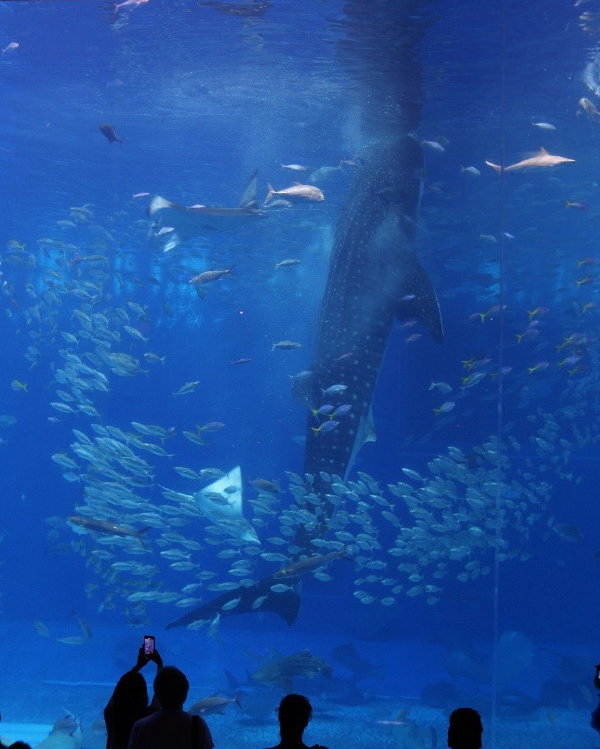- Home
- Okinawa Churashima Foundation Research Institute
- Studies of Marine Animals
- Research activity report
- Maintaining neutral buoyancy by sucking in air? A new theory on the mechanism of whale shark feeding

Research on marine organisms
Maintaining neutral buoyancy by sucking in air? A new theory on the mechanism of whale shark feeding
Whale sharks are the world’s largest fish. They can reach over 12 meters in length. Whale sharks mainly eat plankton, and their feeding behavior is complex. One distinctive feature is vertical feeding. When feeding, a whale shark swims vertically with its mouth open so it can suck in plankton floating on the surface.
One mystery about this vertical feeding is that, in general, sharks are denser than water, but whale sharks do not sink during vertical feeding. Whale sharks can even stop moving their tail, but still remain neutrally buoyant while vertical feeding at the surface.
In this research, we estimated the body volume and density of two whale shark reared at the Okinawa Churaumi Aquarium to calculate their weight within the water. Based on the results, we hypothesize that whale sharks suck in air during vertical feeding, and that this extra air in the mouth and gill chamber allow whale sharks to maintain buoyancy. By maintaining buoyancy with sucked air, the whale sharks may save energy during feeding.

A whale shark neutrally buoyant during vertical feeding.
Authors
Taketeru Tomita, Minoru Toda, Kiyomi Murakumo, Kei Miyamoto, Rui Matsumoto, Keiichi Ueda, Keiichi Sato
Title
Volume of the whale shark and their mechanism of vertical feeding
Journal
Zoology
Link:
Copyright (c) 2015 Okinawa Churashima Foundation. All right reserved.




























